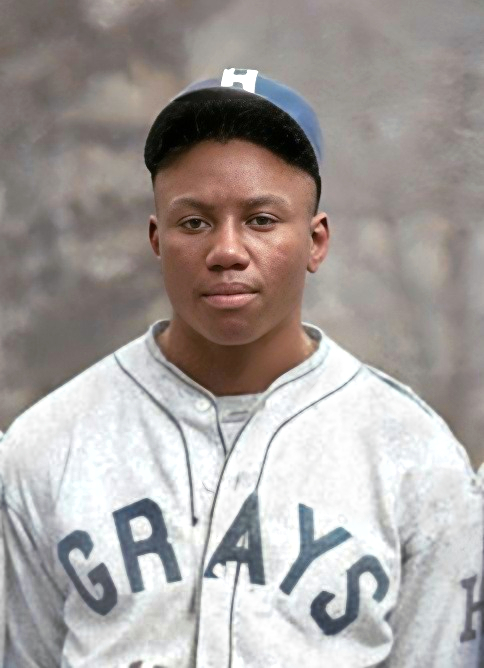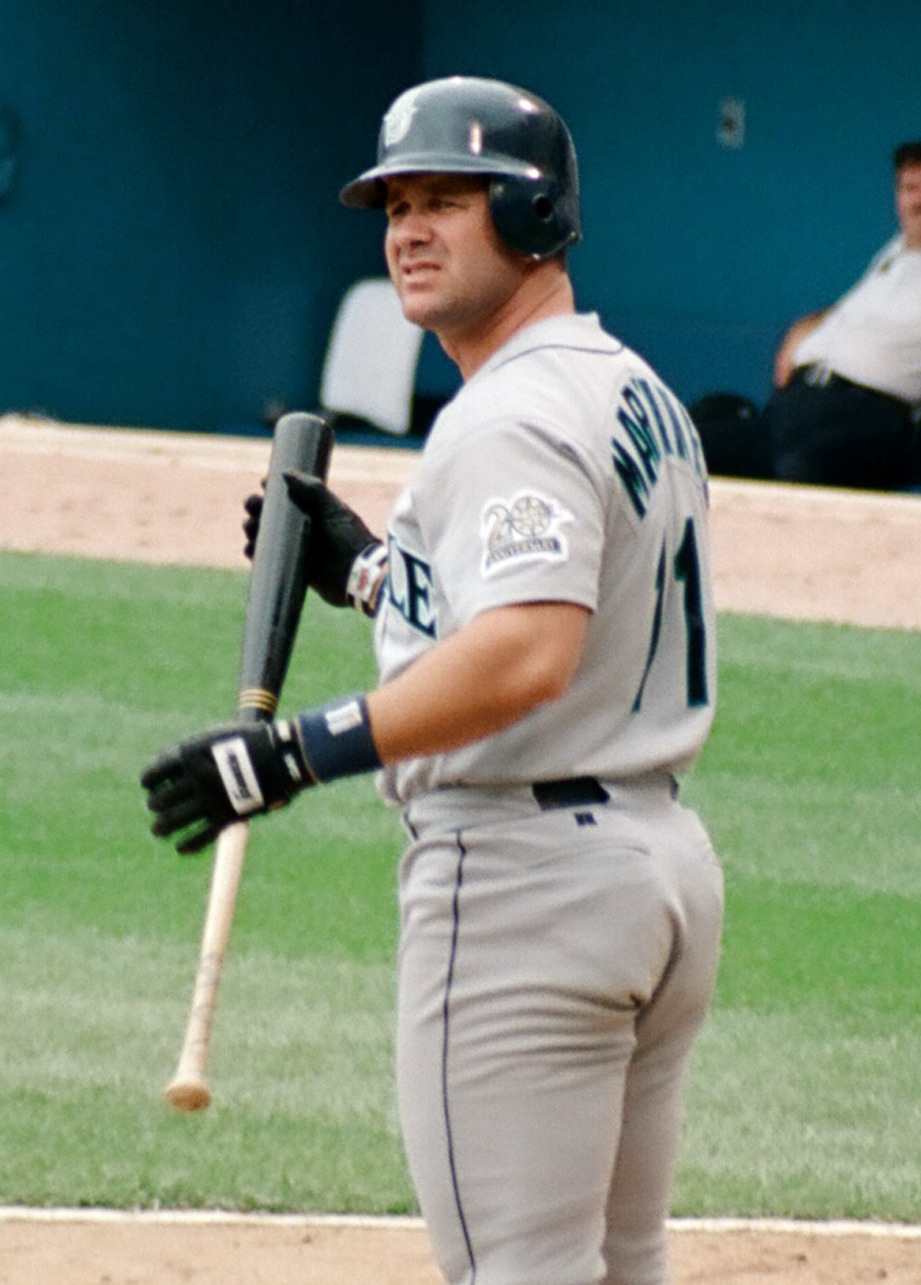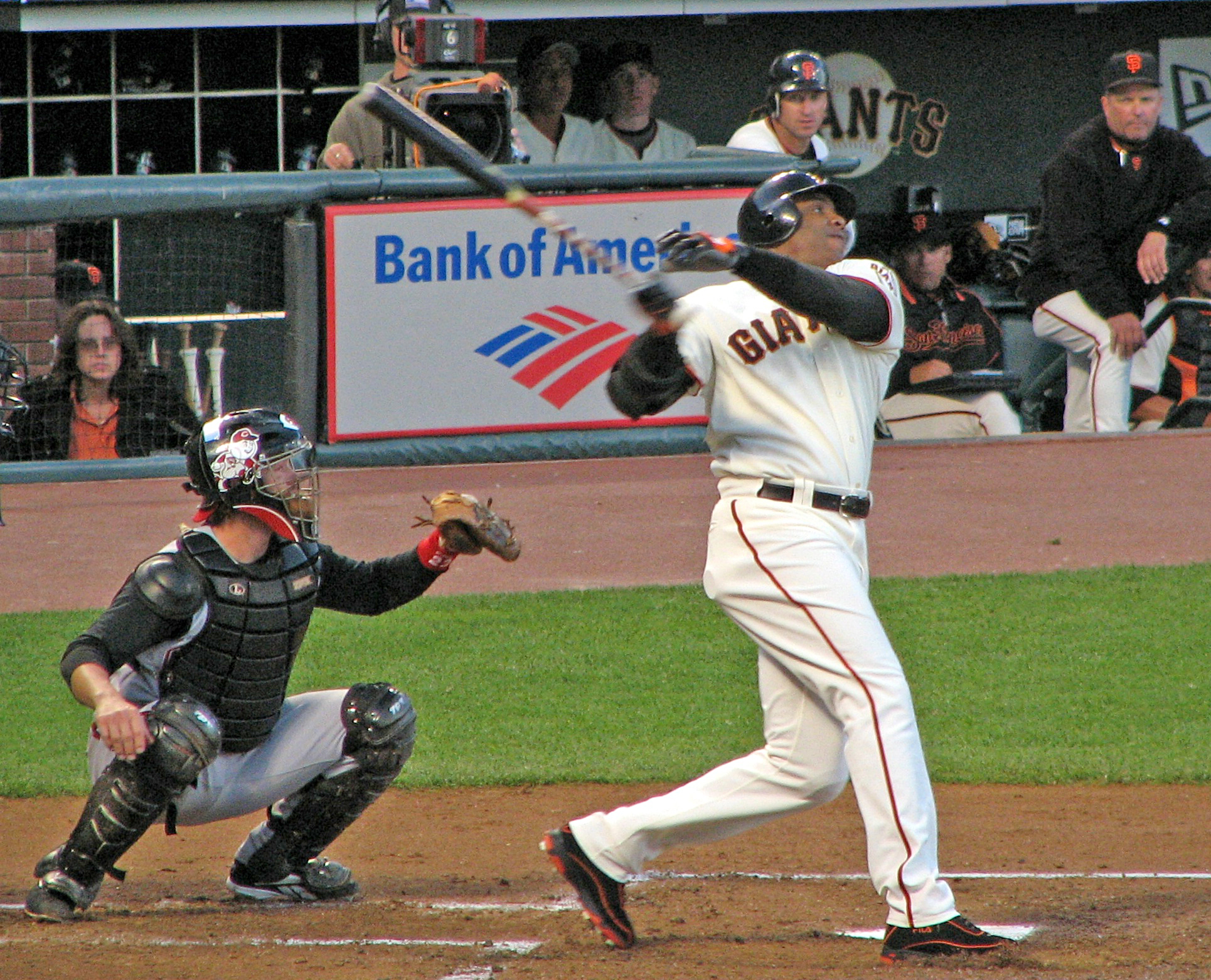|
John Balaz
John Lawrence Balaz (born November 24, 1950) is a Canadian former professional baseball player. Balaz was 23 years old when he broke into the big leagues on September 10, 1974, with the California Angels. Career California Angels Balaz attended Point Loma High School in San Diego, CA. He then went on to San Diego City College while attending there he was drafted by the California Angels in the 5th round (108th overall) of the 1970 amateur baseball draft. An outstanding minor league hitter who led three leagues in runs batted in, Balaz made his major league debut in an unusual way on September 10, 1974 at Anaheim Stadium. In a game against the Kansas City Royals, he was announced as a pinch hitter for left fielder Bruce Bochte in the bottom of the 6th. Kansas City made a pitching change, so manager Dick Williams decided to have Rudy Meoli pinch hit for Balaz, who had to go back and take a seat on the dugout bench. He got into a game three days later, starting in left field a ... [...More Info...] [...Related Items...] OR: [Wikipedia] [Google] [Baidu] |
Left Fielder
In baseball, a left fielder, abbreviated LF, is an outfielder who plays defense in left field. Left field is the area of the outfield to the left of a person standing at home plate and facing towards the pitcher's mound. In the numbering system used to record defensive plays, the left fielder is assigned the number seven. Position description Of all outfielders, the left fielder often will have the weakest arm, as he generally does not need to throw the ball as far to prevent the advance of any baserunners. The left fielder still requires good fielding and catching skills, and tends to receive more balls than the right fielder because right-handed hitters tend to "pull" the ball into left field. The left fielder also backs up third baseman, third base on pick-off attempts from the catcher or pitcher and bunts, when possible. Moreover, when a runner is stealing third base, the left fielder must back up the throw from the catcher. Left fielders must also back up third base when ... [...More Info...] [...Related Items...] OR: [Wikipedia] [Google] [Baidu] |
Bruce Bochte
Bruce Anton Bochte ( ; born November 12, 1950) is an American former professional baseball first baseman and outfielder who played in Major League Baseball from – and –. He played his entire career in the American League for the California Angels, Cleveland Indians, Seattle Mariners and Oakland Athletics. Bochte graduated from Arcadia High School in California and played collegiate ball for the Santa Clara Broncos baseball team until he was drafted by the Angels in the second round (34th overall) of the 1972 Major League Baseball draft. Bochte was called up to the Angels in 1974 after hitting .355 with nine home runs and 56 RBI in 92 games for the Triple-A Salt Lake City Angels of the Pacific Coast League, and made his major league debut on July 19, 1974. In his first game, Bochte appeared as a pinch runner for Bob Oliver, and scored a run while going 0-for-1 in a 5–4 loss to the Baltimore Orioles. He spent the next four seasons with the Angels, hitting .272 during that s ... [...More Info...] [...Related Items...] OR: [Wikipedia] [Google] [Baidu] |
At Bat
In baseball, an at bat (AB) or time at bat is a batter's turn batting against a pitcher. An at bat is different from a plate appearance. A batter is credited with a plate appearance regardless of what happens upon completion of his turn at bat, but a batter is charged with an at bat only if that plate appearance does not have one of the results enumerated below. While at bats are used to calculate certain statistics, including batting average and slugging percentage, players can qualify for the season-ending rankings in these categories only if they accumulate 502 plate appearances during the season. Batters will not be charged an at bat if their plate appearances end under the following circumstances: * Receiving a base on balls (BB).In 1887, Major League Baseball counted bases on balls as hits (and thus as at-bats). The result was high batting averages, including some near .500, and the experiment was abandoned the following season. * Being hit by a pitch (HBP). * Hitti ... [...More Info...] [...Related Items...] OR: [Wikipedia] [Google] [Baidu] |
Slugging Percentage
In baseball statistics, slugging percentage (SLG) is a measure of the batting productivity of a hitter. It is calculated as total bases divided by at-bats, through the following formula, where ''AB'' is the number of at-bats for a given player, and ''1B'', ''2B'', ''3B'', and ''HR'' are the number of singles, doubles, triples, and home runs, respectively: : \mathrm = \frac Unlike batting average, slugging percentage gives more weight to extra-base hits such as doubles and home runs, relative to singles. Such batters are usually referred to as sluggers. Plate appearances resulting in walks, hit-by-pitches, catcher's interference, and sacrifice bunts or flies are specifically excluded from this calculation, as such an appearance is not counted as an at-bat (these are not factored into batting average either). The name is a misnomer, as the statistic is not a percentage but an average of how many bases a player achieves per at bat. It is a scale of measure whose computed ... [...More Info...] [...Related Items...] OR: [Wikipedia] [Google] [Baidu] |
Run (baseball)
In baseball, a run is scored when a player advances around first, second and third base and returns safely to home plate, touching the bases in that order, before three outs are recorded and all obligations to reach base safely on batted balls are met or assured. A player may score by hitting a home run or by any combination of plays that puts him safely "on base" (that is, on first, second, or third) as a runner and subsequently brings him home. Once a player has scored a run, they may not attempt to score another run until their next turn to bat. The object of the game is for a team to score more runs than its opponent. The Official Baseball Rules hold that if the third out of an inning is a force out of a runner advancing to any base then, even if another baserunner crosses home plate before that force out is made, his run does not count. However, if the third out is not a force out, but a tag out, then if that other baserunner crosses home plate before that tag out i ... [...More Info...] [...Related Items...] OR: [Wikipedia] [Google] [Baidu] |
Run Batted In
A run batted in or runs batted in (RBI) is a statistic in baseball and softball that credits a batter for making a play that allows a run to be scored (except in certain situations such as when an error is made on the play). For example, if the batter bats a base hit which allows a teammate on a higher base to reach home and so score a run, then the batter gets credited with an RBI. Before the 1920 Major League Baseball season, runs batted in were not an official baseball statistic. Nevertheless, the RBI statistic was tabulated—unofficially—from 1907 through 1919 by baseball writer Ernie Lanigan, according to the Society for American Baseball Research. Common nicknames for an RBI include "ribby" (or "ribbie"), "rib", and "ribeye". The plural of "RBI" is a matter of "(very) minor controversy" for baseball fans:; it is usually "RBIs", in accordance with the usual practice for pluralizing initialisms in English; however, some sources use "RBI" as the plural, on the basis ... [...More Info...] [...Related Items...] OR: [Wikipedia] [Google] [Baidu] |
Batting Average (baseball)
In baseball, batting average (BA) is determined by dividing a player's hits by their total at-bats. It is usually rounded to three decimal places and read without the decimal: A player with a batting average of .300 is said to be "batting three hundred". If necessary to break ties, batting averages could be taken beyond the .001 measurement. In this context, .001 is considered a "point", such that a .235 batter is five points higher than a .230 batter. History Henry Chadwick, an English statistician raised on cricket, was an influential figure in the early history of baseball. He is credited with creating the modern box score, in 1859, and the practice of denoting a strikeout with a "K". Chadwick wrote in 1869: "In making up a score at the close of the match the record should be as follows:–Name of player, total number of times the first base was made by clean hits, total bases so made, left on bases after clean hits, and the number of times the first base has been made on ... [...More Info...] [...Related Items...] OR: [Wikipedia] [Google] [Baidu] |
Designated Hitter
The designated hitter (DH) is a baseball player who bats in place of another position player, most commonly the pitcher. Unlike other players in a team's lineup, they generally only play as an offensive player and usually do not play defense as a Fielding (baseball), fielder or a pitcher during a game. Due to their specialized offensive-only role, the designated hitter is generally expected to produce above average offensive stats and production compared to other players who play defense. In Major League Baseball, the position is authorized by Rule 5.11 of the Official Baseball Rules. It was adopted by the American League in and by the National League (baseball), National League in , making it universal in MLB. Within that time frame, nearly all amateur baseball, amateur, college baseball, collegiate, and professional baseball, professional leagues worldwide have adopted the designated hitter or some variant, except for Nippon Professional Baseball's Central League. Major Leagu ... [...More Info...] [...Related Items...] OR: [Wikipedia] [Google] [Baidu] |
Right Fielder
A right fielder, abbreviated RF, is the outfielder in baseball or softball who plays defense in right field. Right field is the area of the outfield to the right of a person standing at home plate and facing towards the pitcher's mound. In the numbering system used to record defensive plays, the right fielder is assigned the number 9. Position description Outfielders must cover large distances, so speed, instincts and quickness to react to the ball are key. They must be able to catch fly balls above their head and on the run, as well as prevent balls hit down the right field Baseball, foul line from getting past them. Being situated 250–300 feet from home plate, they must be able to throw the ball accurately over a long distance to be effective. Of all outfield positions, the right fielder often has the strongest arm, because they are the farthest from third base. As well as the requirements above, the right fielder backs up First baseman, first base on all throws from the ... [...More Info...] [...Related Items...] OR: [Wikipedia] [Google] [Baidu] |
Home Run
In baseball, a home run (abbreviated HR) is scored when the Baseball (ball), ball is hit in such a way that the batting (baseball), batter is able to circle the bases and reach home plate safe (baseball), safely in one play without any error (baseball), errors being committed by the Defense (sports), defensive team. A home run is usually achieved by hitting the ball over the outfield fence between the foul poles (or hitting either foul pole) without the ball touching the Baseball field, field. Inside-the-park home runs where the batter reaches home safely while the baseball is in play on the field are infrequent. In very rare cases, a fielder attempting to catch a ball in flight may misplay it and knock it over the outfield fence, resulting in a home run. An official scorer will credit the batter with a hit (baseball), hit, a Run (baseball), run scored, and a run batted in (RBI), as well as an RBI for each Base running, runner on base. The pitcher is recorded as having given u ... [...More Info...] [...Related Items...] OR: [Wikipedia] [Google] [Baidu] |
Jim Kaat
James Lee Kaat (; born November 7, 1938), nicknamed "Kitty", is an American former professional baseball player and television sports commentator. A left-handed pitcher, he played Major League Baseball (MLB) for the Washington Senators / Minnesota Twins (–), Chicago White Sox (–), Philadelphia Phillies (–), New York Yankees (–), and St. Louis Cardinals (–) for a then-record 25 years. Kaat was an All-Star for three seasons and a Gold Glove winner for 16 straight seasons. He was the American League (AL) leader in shutouts (5) in 1962, and the AL leader in wins (25) and complete games (19) in 1966. In accumulating his 283 career wins, he had three 20-win seasons. Kaat won 190 games with the Senators/Twins (all but one win coming with the latter team), second most in club history and most since the team moved to Minnesota; he also has the most Gold Glove Awards of any Twin with 12. After a brief stint as a pitching coach for the Cincinnati Reds, Kaat became a sportsca ... [...More Info...] [...Related Items...] OR: [Wikipedia] [Google] [Baidu] |
Comiskey Park
Comiskey Park was a ballpark in Chicago, Illinois, located in the Armour Square neighborhood on the near-south side of the city. The stadium served as the home of the Chicago White Sox of the American League from 1910 through 1990. Built by White Sox owner Charles Comiskey and designed by Zachary Taylor Davis, Comiskey Park hosted four World Series and more than 6,000 Major League Baseball games. The field also hosted one of the most famous boxing matches in history: Joe Louis' defeat of champion James J. Braddock, launching his 11-year run as the heavyweight champion of the world. The Chicago Cardinals of the National Football League also called Comiskey Park home when they were not playing at Normal Park, Soldier Field, or Wrigley Field. They won the 1947 NFL Championship Game over the Philadelphia Eagles at Comiskey Park. Much less popular than the Bears, the Cardinals had their last season at Comiskey in 1958, and they left for St. Louis in March 1960. The Chicago ... [...More Info...] [...Related Items...] OR: [Wikipedia] [Google] [Baidu] |






